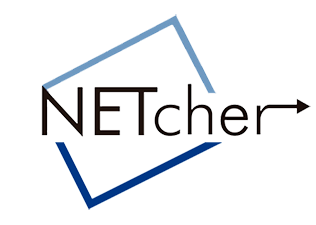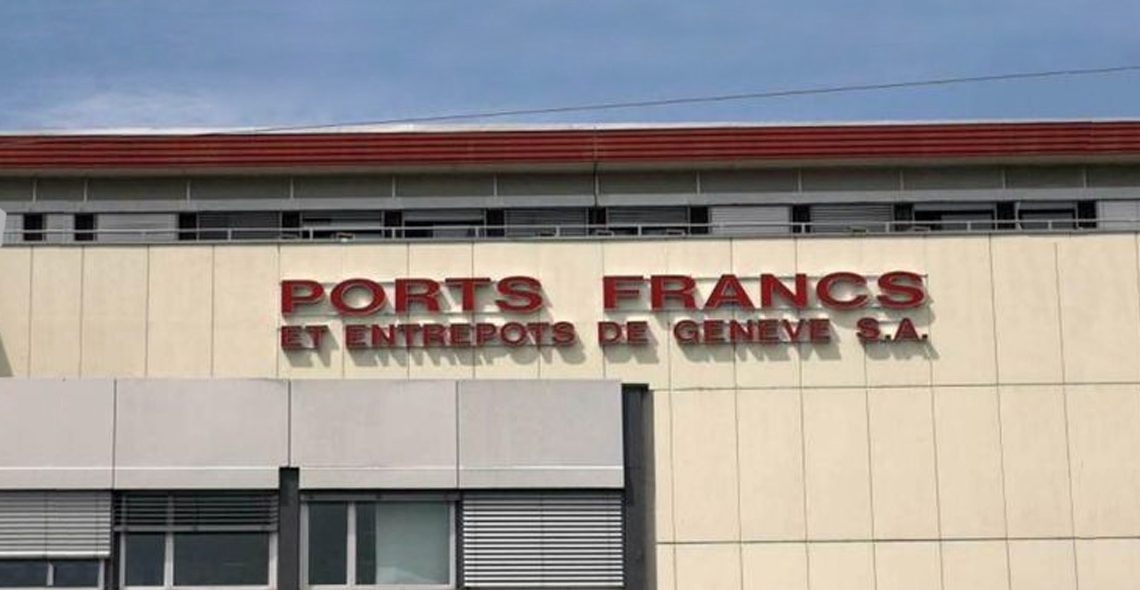Anne-Constance LAUNAY
Geographer (graduated from the University Paris 1 Panthéon-Sorbonne)
Art became structured as a market during the second industrial revolution from the 1880s onwards. Formerly gathered in curiosity cabinets, cherished by their owners, art collections were the result of many years of passionate work. Nowadays, art is monetised, and it strengthens its owner’s social rank. Americans joined this bustling market at the beginning of the 20th century. The reason is provided by the London dealer of this period, Joseph Duveen: “Europe is plenty of art and America is plenty of money” (McAndrew 2010). Art supplies a market, even if it retains its dual nature: on the one hand, it is a good that one enjoys and which is not monetisable; on the other hand, art is a financial asset from which one expects a return on investment. Financial art existed long before the 2008 crisis, but the way it is stored and its visibility have changed. Henceforth, we speak of financialisation of the art market to designate the use of art as a safe investment and as a financial asset. Along with this process of financialisation of the art market, works of art have been gathered together in warehouses in free zones as goods in transit. A type of free zone is dedicated to them: the free ports. Indeed, free ports are particularly suitable for collectors who, while waiting for the best time to sell, seek to optimise their investment by storing their assets in safes designed for art, thus exempting them from the taxes linked to import. However, free ports are not the only areas where art is stored.
What is a free port?
- A warehouse for art
A free port is a type of free zone. Defined by Swiss legislation as a duty-free warehouse, free ports differ from open customs warehouses (OCW) by the absence of a general inventory of goods and by the unlimited period during which objects can remain in transit. In 2018, there are only 10 free ports specialised in art storage and transport out of the 4,000 free zones that exist in the world, according to Taylor Prichard, international trade analyst for the Conway company. In a free port, works of art are considered as goods in transit. Activity notably increases in Swiss free ports at the time of contemporary art fairs such as Art Basel.
- A cluster for art
Although most works of art are indeed in transit through free ports, it is still possible to store them for a longer timespan and thus to benefit from the services offered within this cluster dedicated to art. From the point of view of logistics, a free port can be defined as a logistics platform that concentrates all the activities of the sector: storage, transport, cross-docking, handling, packaging and conditioning of products. It is thus similar to the cluster model in so far as it concentrates all skills that can facilitate the management and optimisation of an art collection (Mérenne-Schoumaker 2007). From the removal of objects to the manufacture of crates and storage, accredited forwarders are entrusted with a number of more important functions. This type of service is based on a relationship of trust between the customer and the forwarder. The more connected – or even confused – the actors are, the more difficult it is to distinguish the actual distribution of tasks in the management (Hesse and Rodrigue, 2004). The free port merges different territories with different functions. It concentrates storage areas, as well as showrooms and laboratories for art expertise and restoration. Private auctions can also be organised there.
What is the history of the free ports?
The idea of free port is linked to the process of packaging goods arriving in bulk. Its origin dates back to the 2nd century BC in Greece: after the Third Macedonian War, the Romans promulgated that the port of Delos would be a free port where cereals, oil, wine, wood and slaves circulated freely. Originally installed in ports, these free zones specialised in works of art. There are 80 free ports in the European Union, only 10 in the world are specialised in the transit and storage of very high value goods. The company Natural Le Coultre, directed by Y. Bouvier, the first private tenant of Geneva’s free ports, exported this model of transit zone dedicated to art. The globalization of the art market and the development of international art fairs in the 1970s and 1980s led to a significant increase in logistics to ensure the smooth functioning of the art market. After the inauguration of the Singapore Freeport in 2010, the company of Y. Bouvier built a similar free port dedicated only to the storage of art collections in 2014 in Luxembourg.
The types of objects concerned by free ports
Any type of work of art can be stored in a free port. Specific storage areas are specially designed to accommodate bottles of wine, vintage cars, jewellery. In Geneva, a separate warehouse is dedicated to “out-of-format” works, thus grouping together numerous works of contemporary art that cannot fit into the main building of the free port.
How does a free port work?
The territory of a free port is characterised by the suspension of import duties and customs taxes. The stored goods are technically in transit. Depending on the country where the goods come from and on their destination, owners are not always liable to VAT. A distinction is made between two types of goods: Community goods coming from the European Union, and non-Community goods liable to VAT in the country of customs clearance. In a free port, several types of VAT-exempt services are offered, such as art restoration, photography or expertise. Taxes will however be due, as well as those on intra-free-port sales, when the work of art finally exits to its final destination. Theoretically, storage areas of free ports are transit areas, and not destinations. In practice, financialisation of the art market implies the definitive storage of goods in free zones, even if they can leave temporarily for exhibitions. The free port as a company is not in direct contact with the end-users who are clients of accredited operators such as Natural Le Coultre in Geneva. These accredited operators are the forwarding agents who rent the storage areas of free ports to collectors.
Control of goods
Customs are present in free ports and they systematically check goods entering and leaving. The free ports of Luxembourg and Singapore have more recent infrastructures that enable them to scan incoming crates and thus check the conformity of the contents of the crate with the accompanying declaration. Controls depend on the willingness of local authorities, and on the number and competence of the staff to certify the veracity of the declared information.
The advantage of a free port is that customs duties and VAT can be postponed. Goods coming from abroad are thus stored in a duty-free warehouse with exemption from duty until final importation. Open customs warehouses (OCW) and free ports are subject to three types of control:
- Formal check (declaration and any document accompanying the consignment)
- Material check (comparison of the declaration with the goods)
- A posteriori control
The transport and removal of each work requires numerous administrative formalities that guarantee its good state of conservation. The circulation of the works of art is closely monitored for insurance reasons in order to know where the responsibility of each actor begins. A conveyor can accompany a work of art when it moves from a museum to another, for example, or at the request of clients.
What is the role of free ports in the global logistics of the art market?
The financialisation of the art market has increased the need for storage spaces. Hence, some free ports have concentrated a large amount of art objects.
The main benefits of free ports for the users are:
- Hiding the final location of the goods
- Ensuring the protection of works
- Storing works of art in the best conditions (humidity, temperature)
- Keeping works in neutral territory (for example for Art funds)
- Facilitating securitisation operations of works of art
- Reducing insurance costs
- Facilitating resale operations and private art sales
More information:
- DELOITTE, ARTTACTIC. (2017). Art & Finance Report. Luxembourg, 136 p.
- DITZIG K., LYNCH R., DING D. (2016). “Dynamic global infrastructure: The freeport as value chain”. Finance and Society. n 2. p 180-188.
- FAMKE A. L. (2017). Freeports as ecosystems for the preservation of fine art value and the acceleration of related businesses. Erasmus University Rotterdam. 77 p.
- GUEX S. JACCARD P.-A. (2011. Le marché de l’art en Suisse : du XIXe siècle à nos jours. Institut suisse pour l’étude de l’art (SIK-ISEA), 376 p.
- HEIDENREICH. S. (2016). Freeportism as Style and Ideology: Post-Internet and Speculative Realism. E-Flux, n°71
- HEMELS S., KAZUKO G. (2017). Tax Incentives for the Creative Industries. Singapor, Springer, 244 p.
- HESSE M., RODRIGUE J-P., (2004). The transport geography of logistics and freight distribution. Journal of Transport Geography, 12(3), pp. 171-184.
- HESSE M. (2014). « International hubs as a factor of local development: evidence from Luxembourg City, Luxembourg, and Leipzig, Germany » Urban Research & Practice
- HISCOX. ARTTACTIC. (2019). Online Art Trade Report. 43 p.
- KORVER. (2018). Money laundering and tax evasion risks in free ports. EPRS.
- Accessible en ligne : http://www.europarl.europa.eu/RegData/etudes/STUD/2018/627114/EPRS_STU(2018)627114_EN.pdf
- LAUNAY A-C. (2015). Les ports-francs au cœur du système spatial et économique du marché de l’art. Mémoire de Master 2, Université Paris 1 Panthéon-Sorbonne. p 82.
- MCANDREW C. (2010). Fine Art and Hign Finance. New-York. Bloomerg Press. p 308.
- STEYERL H. (2015). “Duty-free art”. E-flux. 63 (March). Available at: <http://www.e- flux.com/journal/63/60894/duty-free-art/>. Accessed 1 November 2016.
- WIERBICKI D., ROTTERMUND A., (2016). Freeports for the Art World. http://www.wealthmanagement.com/art-auctions-antiques-report/freeports-art-world

